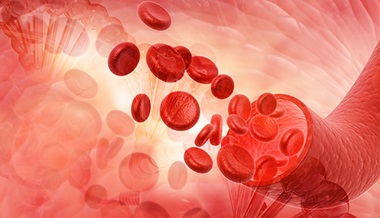Aplastic Anemia
What is aplastic anemia?
Aplastic anemia occurs when your bone marrow doesn’t make enough red and white blood cells, and platelets. Having fewer red blood cells causes hemoglobin to drop.
Hemoglobin is the part of blood that carries oxygen through your body. Having fewer white blood cells makes you more likely to get an infection. And having fewer platelets makes the blood too thin. This means your blood can’t clot the way it should.
What causes aplastic anemia?
Aplastic anemia has many causes. Sometimes it occurs for no known reason. Other causes are linked to a previous illness or disorder. Acquired causes may include:
-
History of certain infectious diseases (such as hepatitis, HIV, Epstein-Barr virus, CMV, or paravirus B19)
-
History of taking certain medicines, such as antibiotics and anticonvulsants
-
Exposure to certain toxins, such as heavy metals
-
Exposure to radiation
-
History of an autoimmune disease, such as lupus
-
Inherited condition
Aplastic Anemia
Aplastic anemia occurs when your bone marrow doesn’t make enough red and white blood cells, and platelets. The body's immune system is confused and begin to attack these critical performing cells.
Who is at risk for aplastic anemia?
Aplastic anemia can occur at any age. But it is more common among teens, young adults, and older adults. Your risk increases if you:
-
Are exposed to toxins
-
Take certain medicines
-
Have a disease such as hepatitis or HIV
What are the symptoms of aplastic anemia?
Each person’s symptoms may vary. Symptoms may include:
-
Headache
-
Dizziness
-
Upset stomach (nausea)
-
Shortness of breath
-
Bruising
-
Lack of energy or tiring easily (fatigue)
-
Abnormal paleness or lack of color in the skin
-
Blood in stool
-
Nosebleeds
-
Bleeding gums
-
Fevers
-
Sore sinuses
-
Enlarged liver or spleen
-
White patches in the mouth (oral thrush)
These symptoms may look like other blood disorders or health problems. Always see your healthcare provider for a diagnosis.
How is aplastic anemia diagnosed?
Your healthcare provider will take your medical history and give you a physical exam. You may also have tests such as:
-
Blood tests. These may include blood chemistries, evaluation of liver and kidney functions, and genetic studies.
-
Bone marrow aspiration or biopsy. This involves taking a small amount of bone marrow fluid (aspiration) or solid bone marrow tissue (called a core biopsy). These are usually taken from the hip bones. They are checked for the number, size, and maturity of blood cells or abnormal cells.
How is aplastic anemia treated?
Your healthcare provider will create a care plan based on:
-
Your age, overall health, and medical history
-
How sick you are
-
How well you can handle certain medicines, procedures, or therapies
-
How long the condition is expected to last
-
Your opinion or preference
Aplastic anemia is a serious illness. Treatment usually depends on the underlying cause. For certain causes, you may recover after treatment. But the condition can come back. To treat the low blood counts, early treatment may include:
-
Blood transfusion (both red blood cells and platelets)
-
Preventive antibiotic therapy
-
Good hygiene to prevent infection
-
Special care when making food (such as only eating well-cooked foods)
-
Avoiding construction sites, which may be a source of certain fungi
-
Medicines to stimulate the bone marrow to produce cells
-
Treatment to reduce your body’s immune system response
-
Hormone therapy
In certain people, a bone marrow transplant may cure aplastic anemia.
Living with aplastic anemia
Managing aplastic anemia includes working closely with your healthcare provider and following your treatment plan. Be sure to tell your healthcare provider about any symptoms you are having. You are more at risk of infections so you should:
-
Stay away from people who are sick
-
Avoid large crowds
-
Wash your hands often
-
Avoid foods that are not cooked all the way through
-
Brush your teeth regularly
-
Get your annual flu shot
-
Develop a physical fitness plan with your provider
Key points about aplastic anemia
-
Aplastic anemia occurs when your bone marrow doesn't make enough red and white blood cells, and platelets.
-
This condition can make you feel tired, raise your risk of infections, and make you bruise or bleed more easily.
-
To treat the low blood counts, early treatment involves easing symptoms.
-
Treatments may include blood transfusions, antibiotics, medicines to stimulate bone marrow production, and other therapies.
-
In some cases, a bone marrow transplant may cure aplastic anemia.





